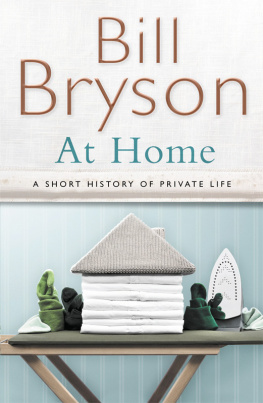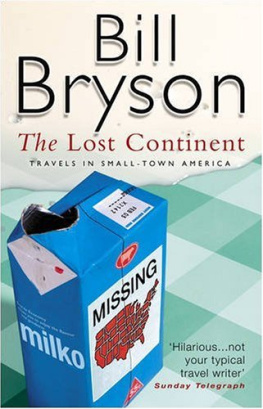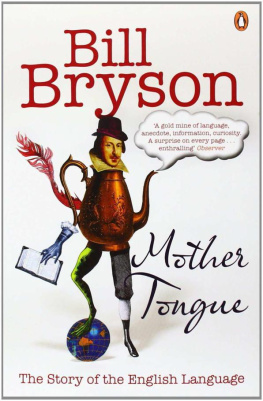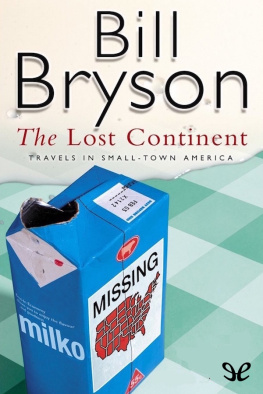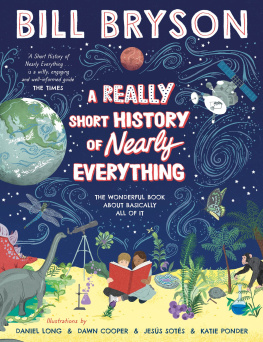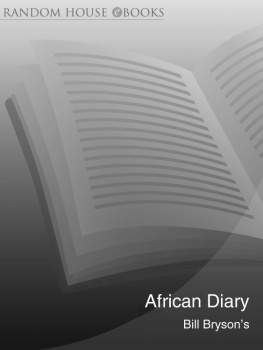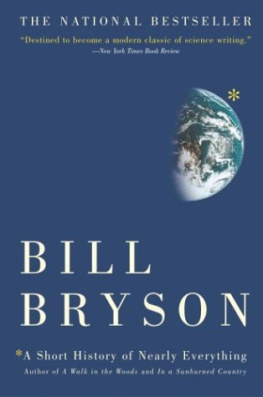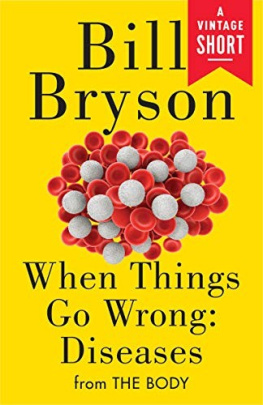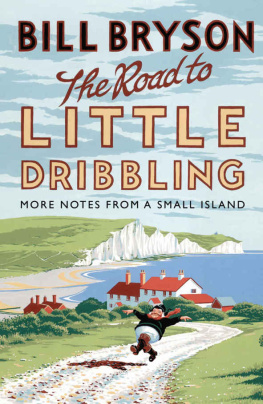Bill Bryson - At Home: A Short History of Private Life
Here you can read online Bill Bryson - At Home: A Short History of Private Life full text of the book (entire story) in english for free. Download pdf and epub, get meaning, cover and reviews about this ebook. year: 2010, publisher: Doubleday, genre: History. Description of the work, (preface) as well as reviews are available. Best literature library LitArk.com created for fans of good reading and offers a wide selection of genres:
Romance novel
Science fiction
Adventure
Detective
Science
History
Home and family
Prose
Art
Politics
Computer
Non-fiction
Religion
Business
Children
Humor
Choose a favorite category and find really read worthwhile books. Enjoy immersion in the world of imagination, feel the emotions of the characters or learn something new for yourself, make an fascinating discovery.
- Book:At Home: A Short History of Private Life
- Author:
- Publisher:Doubleday
- Genre:
- Year:2010
- Rating:4 / 5
- Favourites:Add to favourites
- Your mark:
- 80
- 1
- 2
- 3
- 4
- 5
At Home: A Short History of Private Life: summary, description and annotation
We offer to read an annotation, description, summary or preface (depends on what the author of the book "At Home: A Short History of Private Life" wrote himself). If you haven't found the necessary information about the book — write in the comments, we will try to find it.
At Home: A Short History of Private Life — read online for free the complete book (whole text) full work
Below is the text of the book, divided by pages. System saving the place of the last page read, allows you to conveniently read the book "At Home: A Short History of Private Life" online for free, without having to search again every time where you left off. Put a bookmark, and you can go to the page where you finished reading at any time.
Font size:
Interval:
Bookmark:

Bill Bryson was struck one day by the thought that we devote a lot more time to studying the battles and wars of history than to considering what history really consists of: centuries of people quietly going about their daily business eating, sleeping and merely endeavouring to get more comfortable.
And that most of the key discoveries for humankind can be found in the very fabric of the houses in which we live. This inspired him to start a journey around his own house, an old rectory in Norfolk, wandering from room to room considering how the ordinary things in life came to be.
Along the way he did a prodigious amount of research on the history of anything and everything, from architecture to electricity, from food preservation to epidemics, from the spice trade to the Eiffel Tower, from crinolines to toilets; and on the brilliant, creative and often eccentric minds behind them. And he discovered that, although there may seem to be nothing as unremarkable as our domestic lives, there is a huge amount of history, interest and excitement and even a little danger lurking in the corners of every home.
Where A Short History of Nearly Everything was a sweeping panorama of the world, the universe and everything, At Home peers at private life through a microscope. Bryson applies the same irrepressible curiosity, irresistible wit, stylish prose and masterful storytelling that made A Short History of Nearly Everything one of the most lauded books of the last decade, and delivers one of the most entertaining and illuminating books ever written about the history of the way we live.
A SHORT HISTORY OF PRIVATE LIFE
Bill Bryson

Doubleday
LONDON NEWYORK TORONTO SYDNEY AUCKLAND
This eBook is copyright material and must not be copied, reproduced, transferred, distributed, leased, licensed or publicly performed or used in any way except as specifically permitted in writing by the publishers, as allowed under the terms and conditions under which it was purchased or as strictly permitted by applicable copyright law. Any unauthorised distribution or use of this text may be a direct infringement of the authors and publishers rights and those responsible may be liable in law accordingly.
Version 1.0
Epub ISBN 9781409095545
www.randomhouse.co.uk
TRANSWORLD PUBLISHERS
6163 Uxbridge Road, London W5 5SA
A Random House Group Company
www.rbooks.co.uk
First published in Great Britain in 2010 by Doubleday an imprint of Transworld Publishers
Copyright Bill Bryson 2010
Bill Bryson has asserted his right under the Copyright, Designs and Patents Act 1988 to be identified as the author of this work.
A CIP catalogue record for this book is available from the British Library.
Addresses for Random House Group Ltd companies outside the UK can be found at: www.randomhouse.co.uk The Random House Group Ltd Reg. No. 954009
Bill Brysons bestselling travel books include The Lost Continent, Notes from a Small Island, A Walk in the Woods and Down Under. His acclaimed book on the history of science, A Short History of Nearly Everything, won the Aventis Prize for Science Books and the Descartes Science Communication Prize. He has written on language in Mother Tongue and Made in America, and his latest bestsellers are Shakespeare and The Life and Times of the Thunderbolt Kid.
www.billbryson.co.uk
To Jesse and Wyatt
Also by Bill Bryson
The Lost Continent
Mother Tongue
Troublesome Words
Neither Here Nor There
Made in America
Notes from a Small Island
A Walk in the Woods
Notes from a Big Country
Down Under
African Diary
A Short History of Nearly Everything
Brysons Dictionary for Writers and Editors
The Life and Times of the Thunderbolt Kid
Shakespeare (Eminent Lives Series)
S OME TIME AFTER we moved into a former Church of England rectory in a village of tranquil anonymity in Norfolk, I had occasion to go up into the attic to look for the source of a slow but mysterious drip. As there are no stairs to the attic in our house, the process involved a tall stepladder and much unseemly wriggling through a ceiling hatch, which was why I had not been up there before (or have returned with any enthusiasm since).
When I did finally flop into the dusty gloom and clambered to my feet, I was surprised to find a secret door, not visible from anywhere outside the house, in an external wall. The door opened easily and led out on to a tiny rooftop space, not much larger than a tabletop, between the front and back gables of the house. Victorian houses are often a collection of architectural bewilderments, but this one was starkly unfathomable: why an architect had troubled to put in a door to a space so lacking in evident need or purpose was beyond explanation, but it did have the magical and unexpected effect of providing the most wonderful view.
It is always quietly thrilling to find yourself looking at a world you know well but have never seen from such an angle before. I was perhaps fifty feet above the ground, which in mid-Norfolk more or less guarantees a panorama. Immediately in front of me was the ancient flint church to which our house was once an adjunct. Beyond, down a slight incline and slightly separate from church and rectory, was the village to which both belonged. In the distance in the other direction was Wymondham Abbey, a heap of medieval splendour commanding the southern skyline. In a field in the middle distance a tractor rumbled and drew straight lines in the soil. All else in every direction was quiet, agreeable, timeless English countryside.
What gave all this a certain immediacy was that just the day before I had walked across a good part of this view with a friend named Brian Ayers. Brian had just retired as the county archaeologist, and may know more about the history and landscape of Norfolk than anyone alive. He had never been to our village church, and was eager to have a look. It is a handsome and ancient building, older than Notre Dame in Paris and about the same vintage as Chartres and Salisbury cathedrals. But Norfolk is full of medieval churches it has 659 of them, more per square mile than anywhere else in the world so any one is easily overlooked.
Have you ever noticed, Brian asked as we stepped into the churchyard, how country churches nearly always seem to be sinking into the ground? He pointed out how this one stood in a slight depression, like a weight placed on a cushion. The church foundations were about three feet below the churchyard around it. Do you know why that is?
I allowed, as I often do when following Brian around, that I had no idea.
Well, it isnt because the church is sinking, Brian said, smiling. Its because the churchyard has risen. How many people do you suppose are buried here?
I glanced appraisingly at the gravestones and said, I dont know. Eighty? A hundred?
I think thats probably a bit of an underestimate, Brian replied with an air of kindly equanimity. Think about it. A country parish like this has an average of 250 people in it, which translates into roughly a thousand adult deaths per century, plus a few thousand more poor souls that didnt make it to maturity. Multiply that by the number of centuries that the church has been there and you can see that what you have here is not eighty or a hundred burials, but probably something more in the order of, say, twenty thousand.
Font size:
Interval:
Bookmark:
Similar books «At Home: A Short History of Private Life»
Look at similar books to At Home: A Short History of Private Life. We have selected literature similar in name and meaning in the hope of providing readers with more options to find new, interesting, not yet read works.
Discussion, reviews of the book At Home: A Short History of Private Life and just readers' own opinions. Leave your comments, write what you think about the work, its meaning or the main characters. Specify what exactly you liked and what you didn't like, and why you think so.

